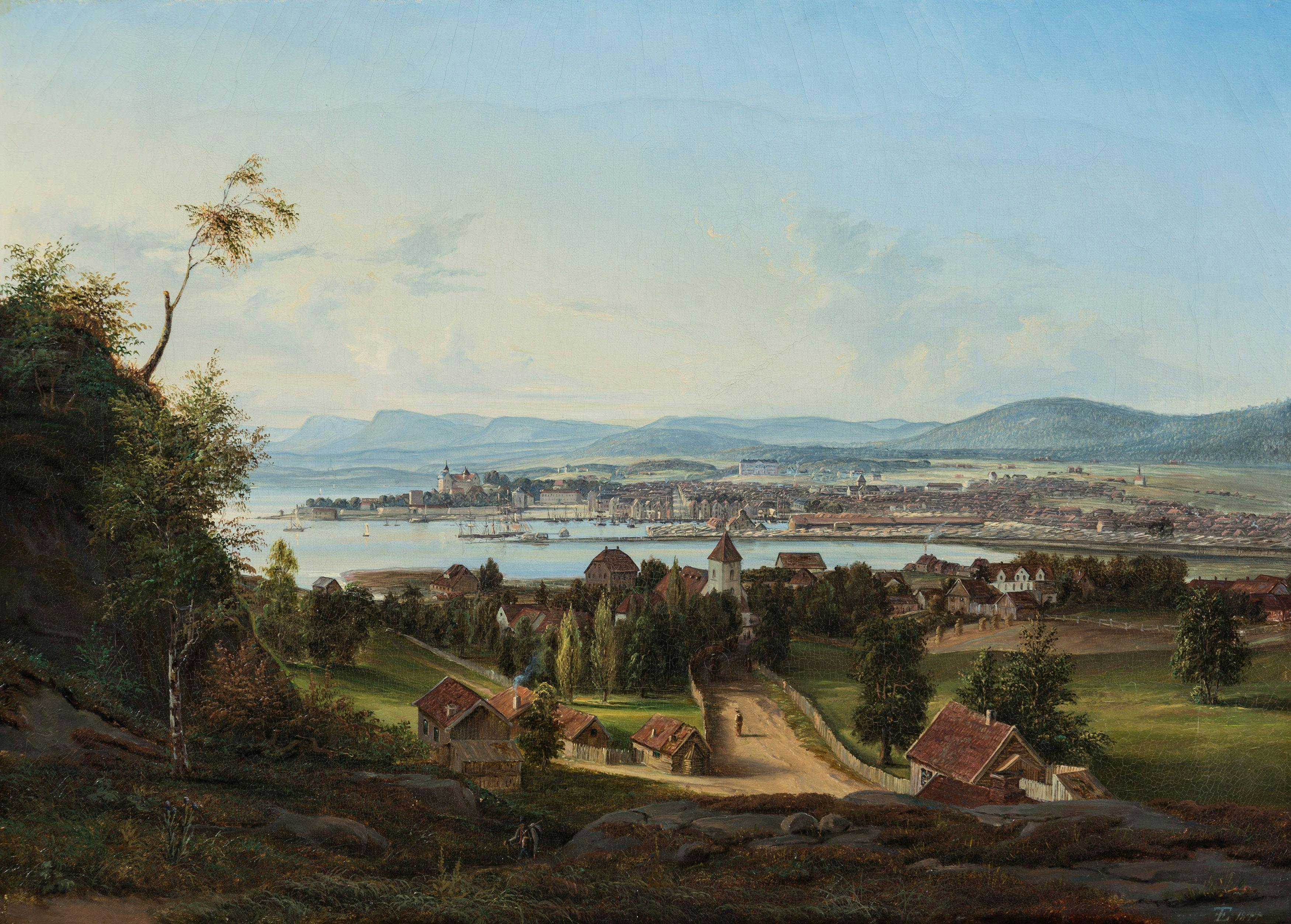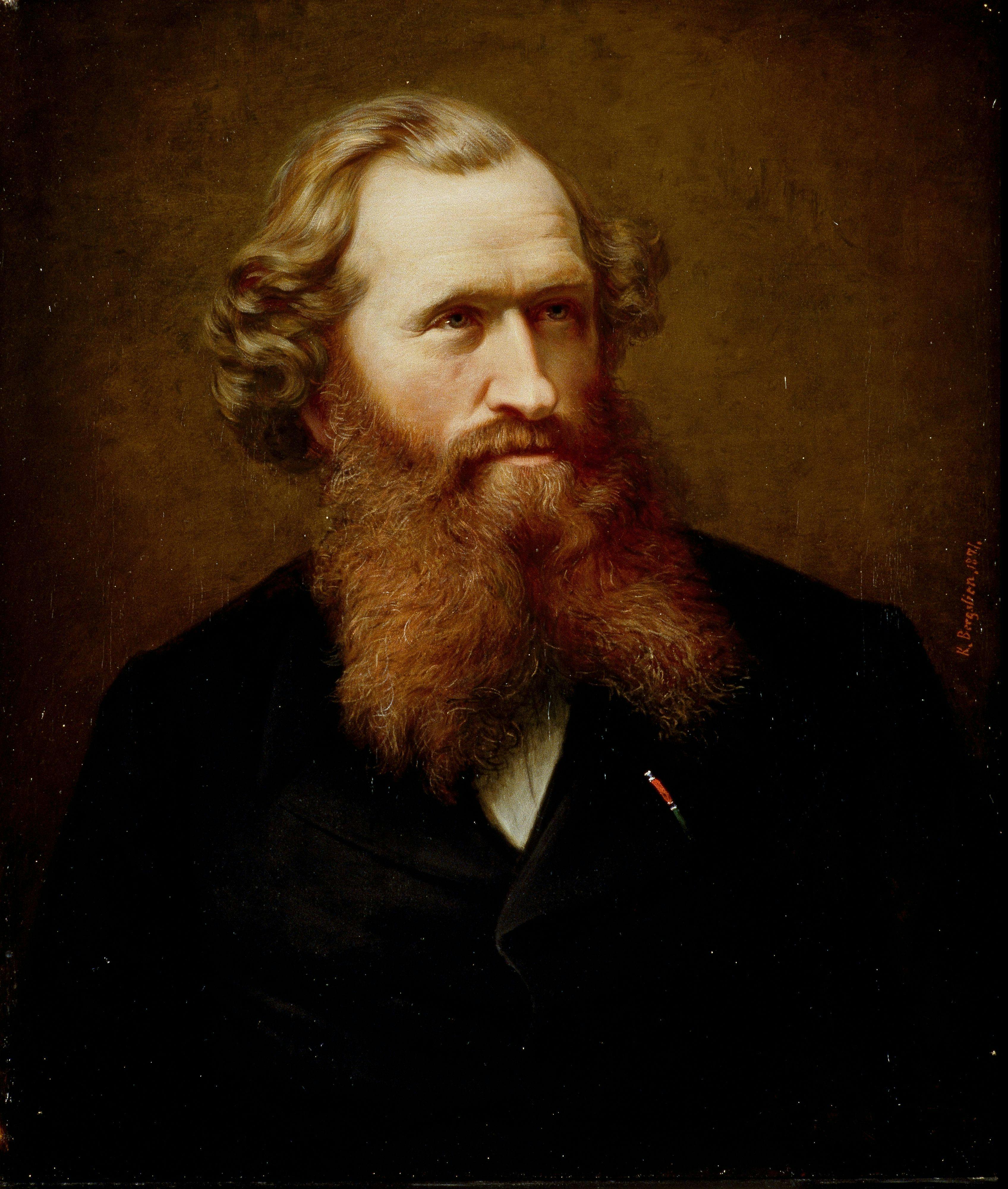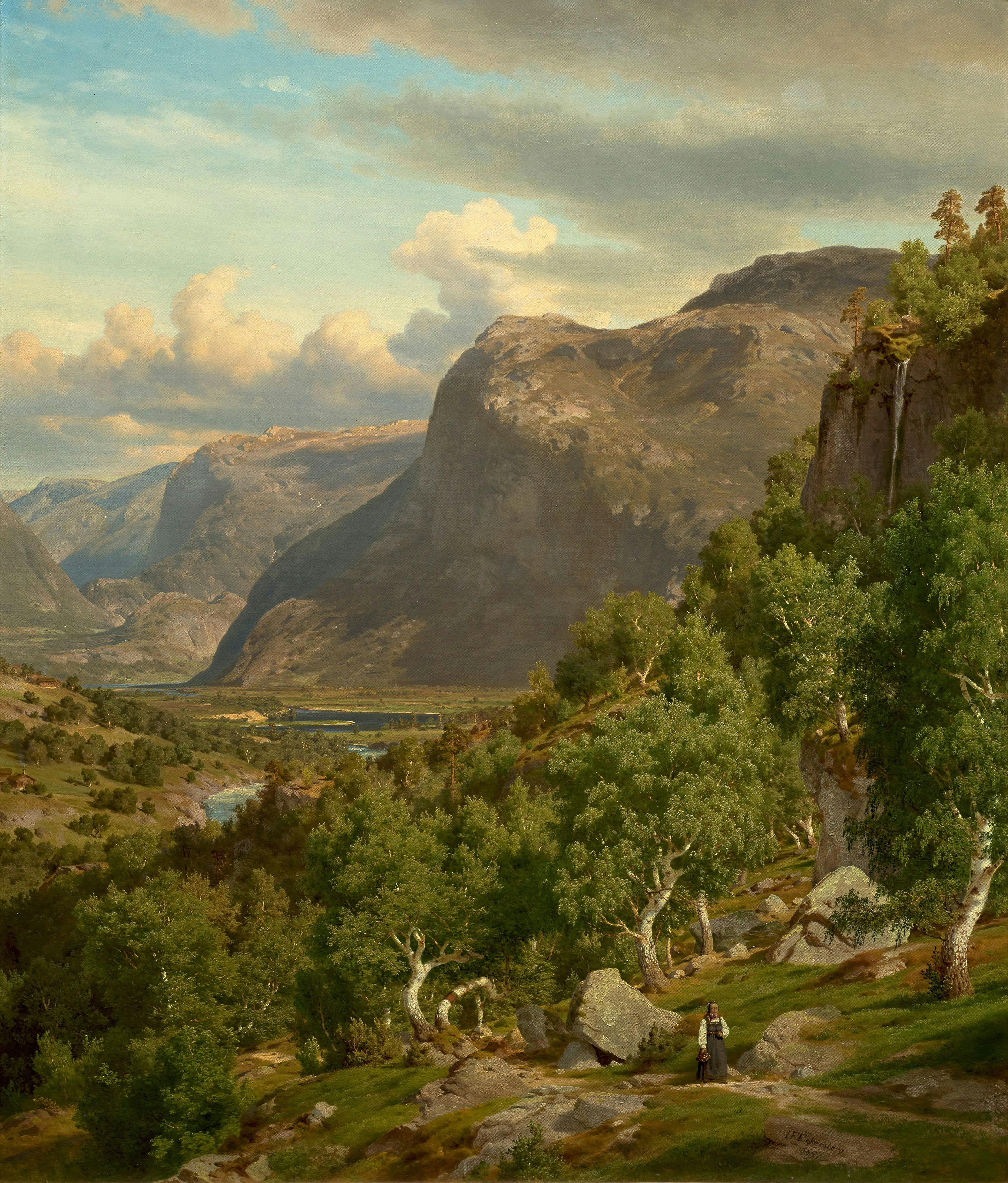Johan Fredrik EckersbergFrom Hallingdal to Madeira
4.5.-22.9.2024
Presented by Morten Viskum
With his upbringing in Drammen and with his many motifs from Hallingdal, as well as more distant locations such as Madeira and Düsseldorf, Johan Fredrik Eckersberg (b. Drammen 1822 – d. Sandvika 1870) is an important and central artist worthy of the attention Galleri Star dedicated to him. He is principally known for atmospheric depictions of Norwegian mountains, of forests and valleys, glaciers and fjords, as well as the occasional farm or building. His painterly method was typified by a clear, direct, and dispassionate approach, in which coloristic elements were toned down and the line accentuated – a style that brought his motifs closer to reality and to photographic depiction than was the case with many of the Düsseldorf painters. Johan Fredrik Eckersberg can therefore be considered, in many regards, a transitional figure between romanticism and realism in Norwegian art.

Eckersberg received his art education under Johannes Flintoe (1843–46) at the school of drawing in Christiania (which in the 1840s had the title of Royal Norwegian School of Art), and at Kunstakademie Düsseldorf under Johann Wilhelm Schirmer (1846–48). In Düsseldorf, he also received guidance and instruction from Hans Gude. Both Gude and August Cappelen were significant sources of inspiration for him. Before 1909, when the National Art Academy was founded in the capital, an art education was unavailable in Norway, so artists travelled abroad, in particular to the academies of Dresden and Düsseldorf. They found most of their motifs of landscapes and rural life during study trips back home in Norway.
In 1859, Eckersberg started his own painting school on Lille Grensen in Christiania. The school had a significant impact on artistic life in Norway, and, after his death in 1870, it continued to be run by Knud Bergslien and Morten Müller.
National romanticism in Norwegian art (ca. 1830–70) is most readily characterised by landscape paintings of Norwegian nature and depictions of rural life. It is considered a national movement within romanticism (ca. 1800 – ca. 1850), while realism (1870s and 80s) is distinguished by a more detached observation of nature and reality. Realism and naturalism (ca. 1840–70) are closely related, and often confused for one another, but differ in the focus that naturalism places on the understanding of nature.
Eckersberg only lived to be 48 years old. He had been afflicted with tuberculosis for many years, and it was the reason he and his wife, Laura Martine Hansen, spent two years in Funchal on Madeira (1852–1854). The couple had married in 1850, and went on to have four children.

The works that were exhibited in Galleri Star stretch across 25 years. Among those that were dated, the earliest was from 1844, Utsikt over Christiania (View of Christiania), painted when Eckersberg was 22. The latest were from 1869, the year before he died. Motifs range from the wintry Utsikt fra Borgen mot Bygdø (View from Borgen towards Bygdø, 1859) to two verdant southern landscapes with stylish villas, both with the title Fra Madeira (1859 and 1869). Hageselskapet (Garden Party, 1864) is a panorama of Norwegian nature and country life, depicting a distant Swiss-style house – along with equally distant, though detailed, celebrations in the garden. Norway’s fjords and mountains are beautifully rendered in Fra Hardanger (1869) and Nes i Hallingdal (1869), along with Fra Østlandet (undated) and Fra Dispen/Mindresundet mot Oppstryn (undated).

Eckersberg supplied several illustrations for Peter Christen Asbjørnsen’s collections of folk tales, and also painted two versions of Brudeferd på Hardangerfjorden (Bridal Procession on Hardangerfjord, 1865 and 1866), almost twenty years after Tidemand and Gude’s Brudeferd i Hardanger (1848), one of which (1865 version) is in the collection of the National Museum in Stockholm.
Eckersberg participated in several group exhibitions in Christiania, Bergen, Copenhagen, Stockholm, Paris, and Vienna, as well as at the International Exhibition in London (1862), but never had a solo exhibition while he was alive. The first was held in Christiania Kunstforening in 1884, 14 years after his death, and a second at Blomqvist kunsthandel in 1925.
Eckersberg is represented in the National Museum in Oslo, Kode in Bergen, Trondheim Kunstmuseum, Lillehammer Kunstmuseum, Stavanger Kunstmuseum, Drammens Museum, Malmö Museum, Oslo Bymuseum, Norsk Folkemuseum, Norwegian Maritime Museum, the National Museum in Stockholm, and Massachusetts General Hospital in Boston. He is also responsible for the altarpiece in Tangen Church in Drammen (1854), as well as the wall paintings in Thomas Heftyes gate 8 in Oslo (a commission by businessman Thomas J. Heftye).

—
We are grateful to Drammens Museum, Sparebanken Øst, Stiftelsen Tingstua, The Gundersen Collection, and private owners for the loan of works for this exhibition. We are especially grateful for the support given by Sparebanken Øst.
--
Installation photography: Nina Ansten
Participating artists
- Johan Fredrik Eckersberg






